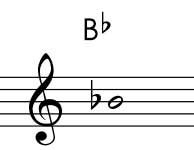

A sharp note, on the other hand, is a note with a semitone (half step) that is higher than the other half. Fiscious (from French) or dieis (from Greek) are the names given to a higher pitch. In the key signature, there are two sharp notes in addition to the notes in D Major. In linguistics, there are six major words: a, b, c, d, e, f, and g.

The key signature of a note is used in music notation to indicate whether or not to play it flat or sharp. The note F is played on the top line of the music staff in Sharp#, with the keyboard holding down F. A natural cancels a sharp or flat in a measure or song. Sharps, which are denoted by the * symbol, are semitones (or half steps) higher than the notes to their right on sheet music. either of these two definitions, the sharp symbol is used to alter the pitch or speed of a note. Second, it can refer to a note that is to be played slightly faster than the note it replaces. For example, the note A is a half step higher than G#. First, it can refer to the pitch of a note that is higher than the note it replaces. But what do these sharp symbols mean? In music, the term “sharp” can mean two different things. If you’ve ever looked at a piece of sheet music, you may have noticed the little sharp symbols (#) scattered throughout the staff.


 0 kommentar(er)
0 kommentar(er)
